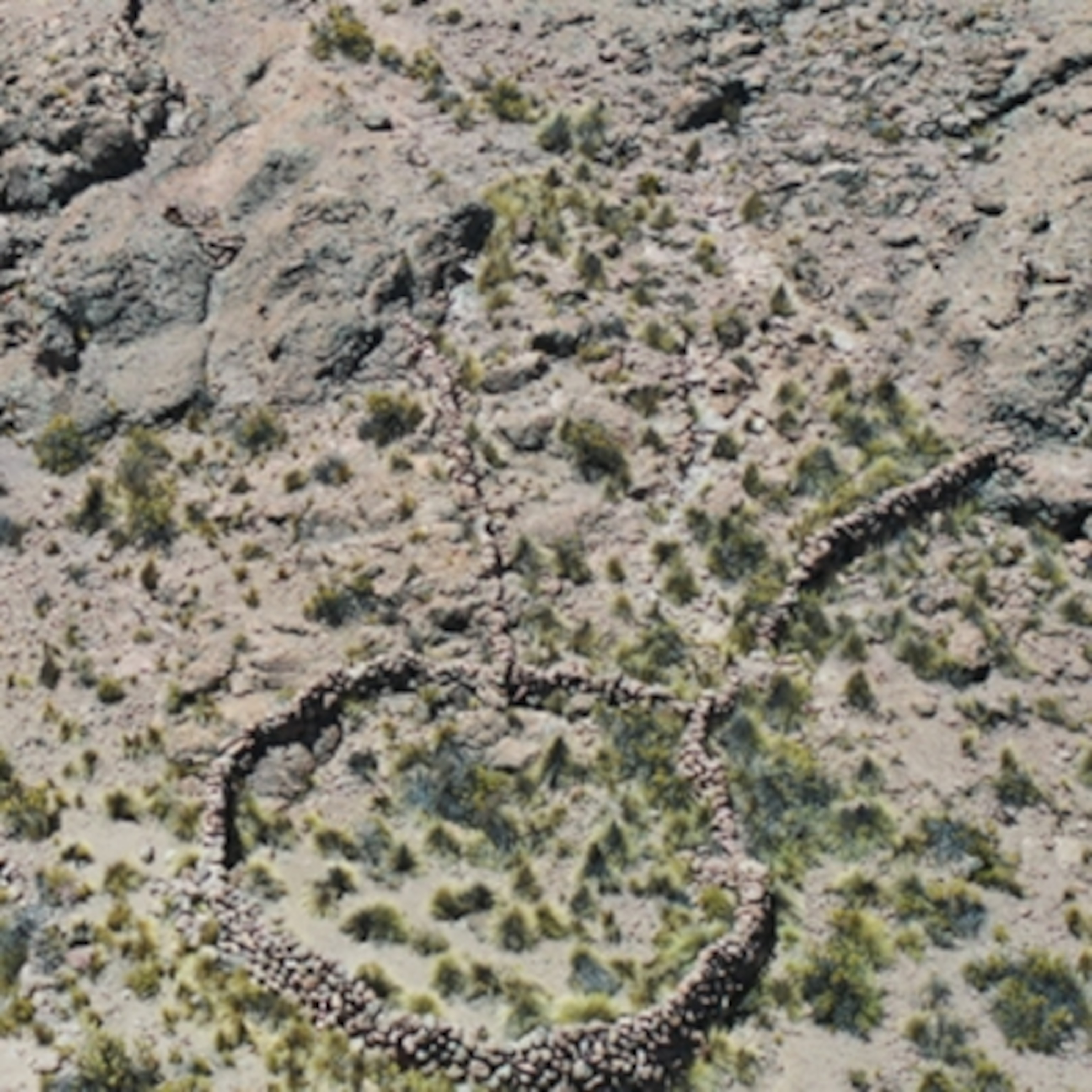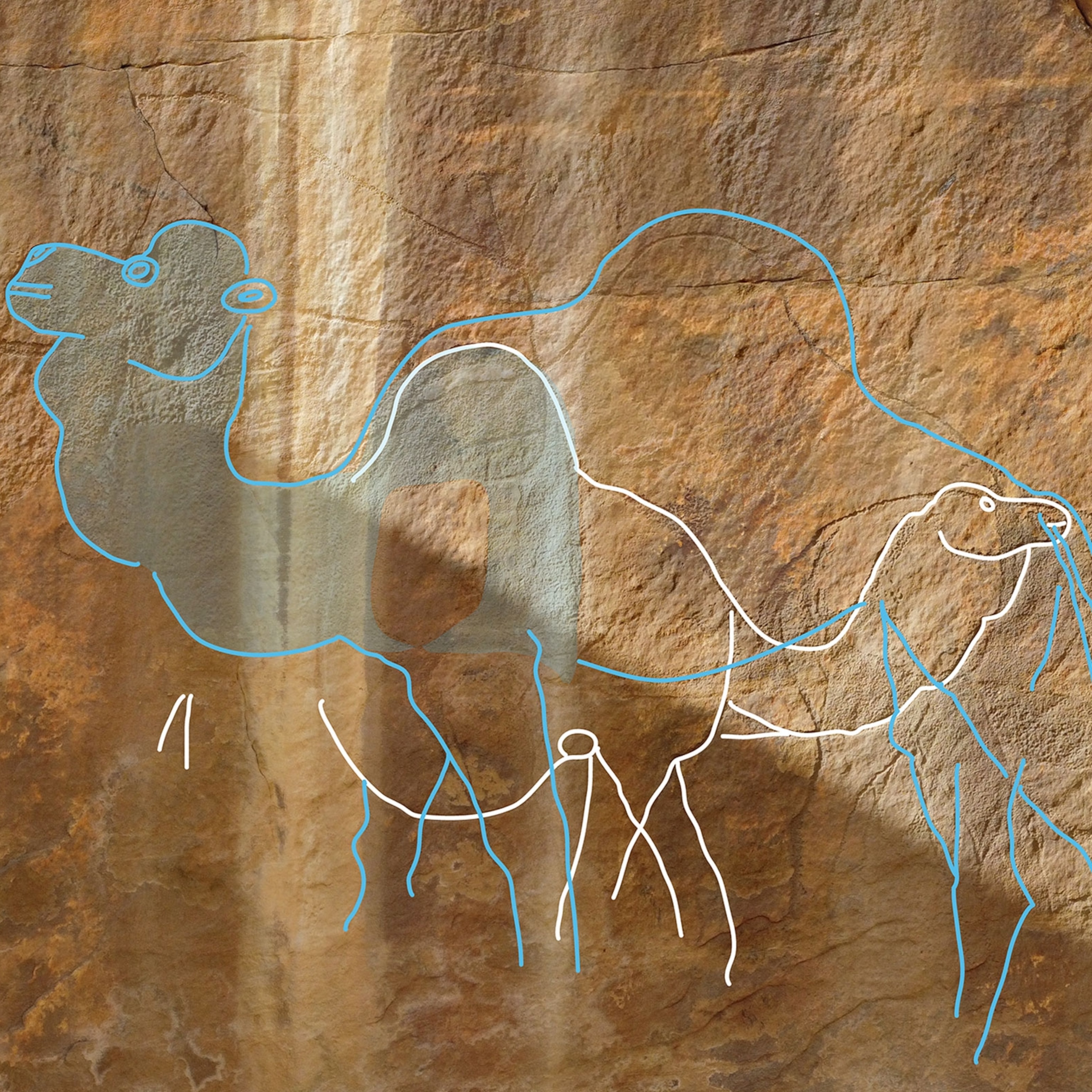Giant ‘Arrows’ Seen From Space Point to a Vanished World
In the remote heart of Asia, ancient hunting traps hint at ghostly animal herds and boundless human appetites.
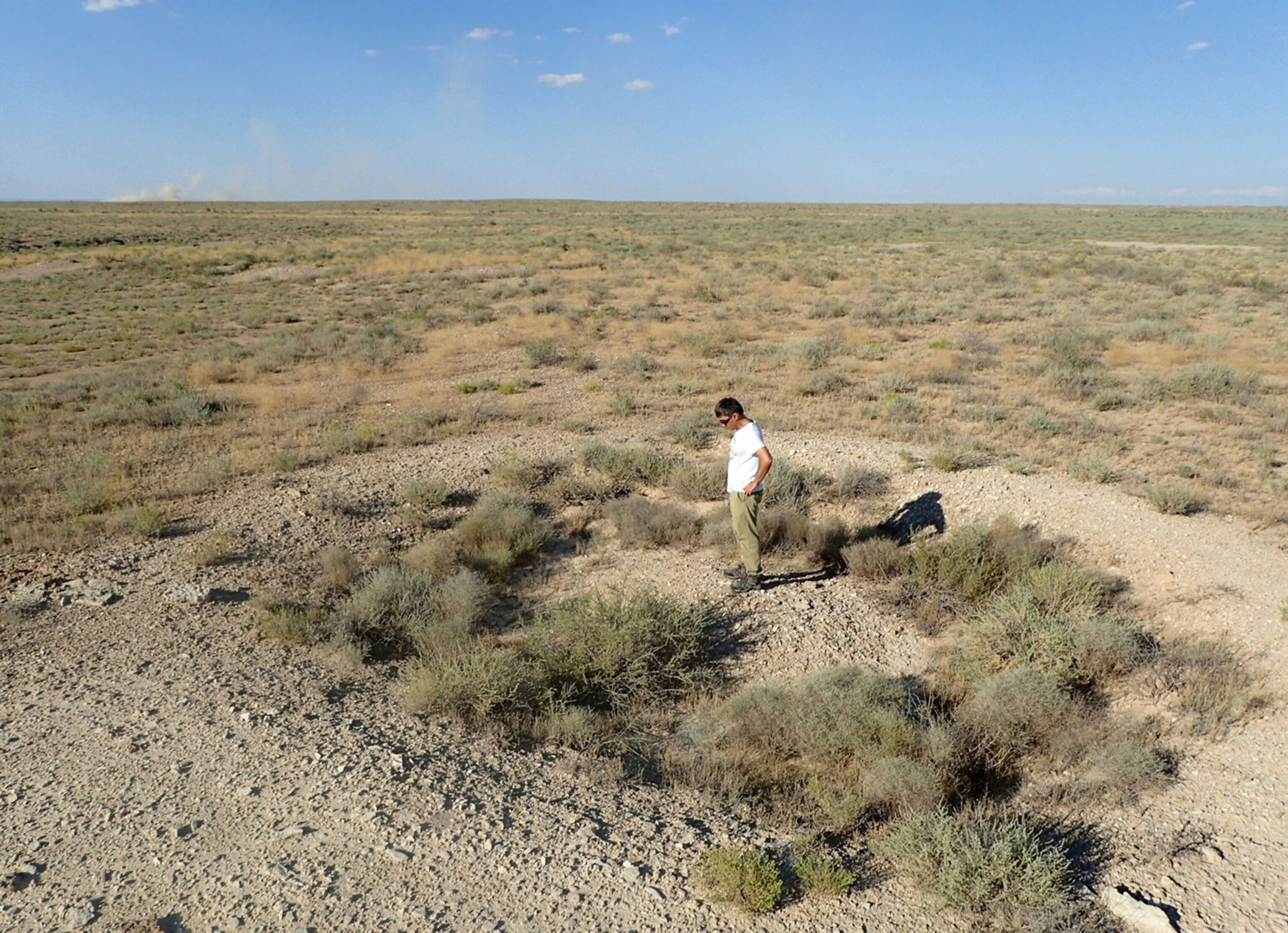
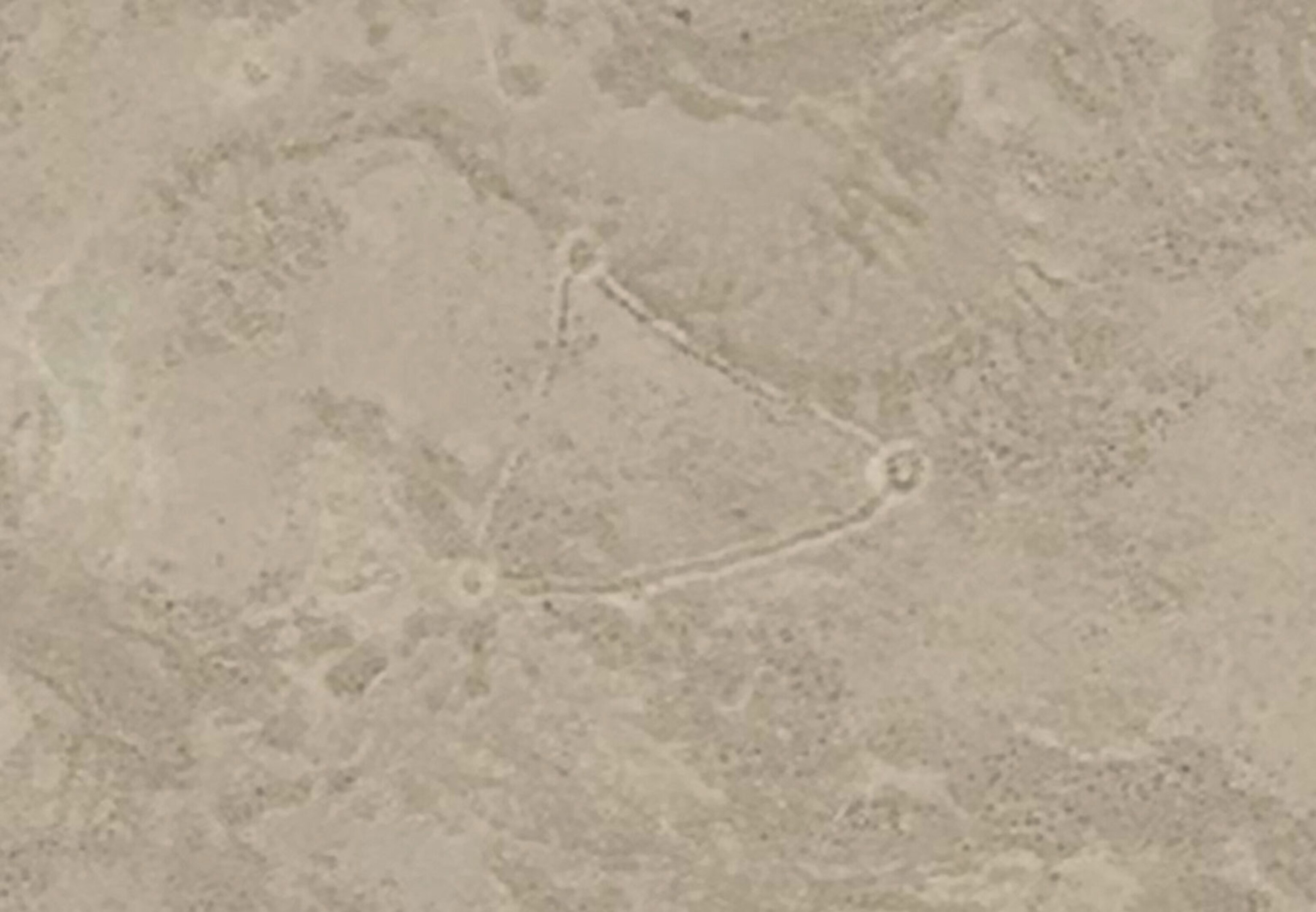
USTYURT PLATEAU, Uzbekistan — Few people have seen the desert kites of Central Asia. The sprawling archaeological structures, dating back at least to the Iron Age, are extremely remote. They lie forgotten by the hundreds atop the vast and desolate Ustyurt Plateau between Uzbekistan and Kazakhstan: mysterious berms of piled rocks and earth that stretch in spidery geometric patterns across the grasslands for half a mile or more. You can walk past them without knowing it. I certainly did.
This summer, while traversing the region on foot for a global project retracing the first human diaspora out of Africa, I sometimes sat on the strange ruins without realizing it. Their crumbling walls, often consisting of rows of stones just a foot high, disappeared into the distance. They ran in straight lines. Or they curved gently. Or zigzagged at sharp angles. They appeared to have no apparent purpose. Yet scientists studying the sites today say these cryptic features are anything but haphazard: Instead they represent colossal monuments to human ingenuity—and avarice.
“They make more sense when looked at from above,” says Shamil Amirov, an archaeologist who uses satellite imagery to map the colossal artifacts in western Uzbekistan. “Most are shaped like arrows. We have found them in chains across the migration trails of antelopes. They probably directed thousands of animals into killing pits.”
In effect, Amirov says, Central Asia’s desert kites—named after similar triangular or kite-shaped features discovered earlier in the Middle East—were massive protein pumps. Built over generations by nomadic pastoralists some 2,500 years ago, the structures siphoned vast numbers of animals from the environment. At the time, ungulates had swarmed in Serengeti-like numbers. By contrast, when I walked the Ustyurt Plateau, I spotted only six saiga—a once common steppe antelope—in two months. But as I would soon learn, if there was a lesson here about human appetites, it wasn’t only an Iron Age one.
Cryptic Structures
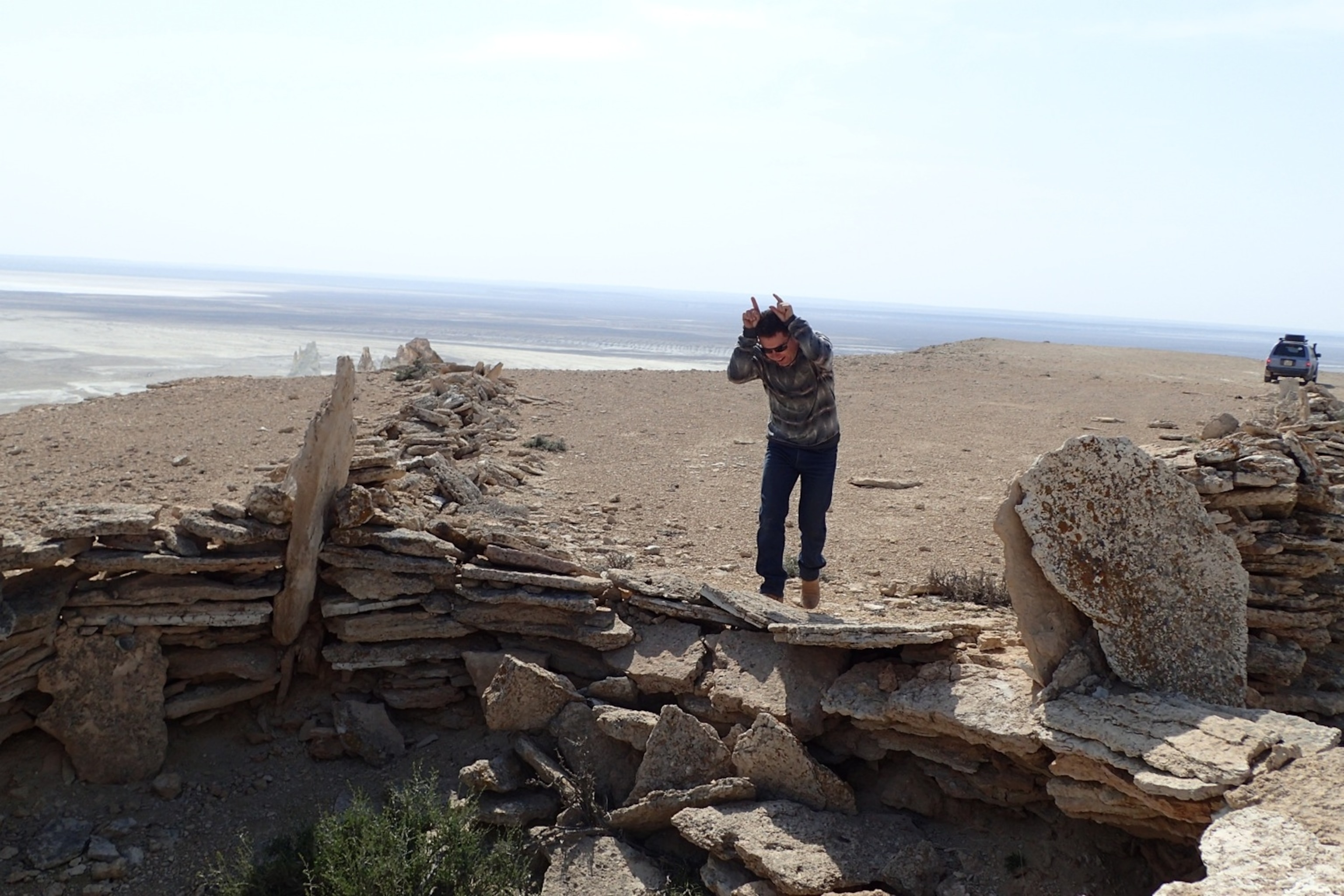
Desert kites first came to the attention of science nearly a century ago, when World War I pilots reported low walls tracing gigantic polygons, funnels, and triangles across the sunbaked barrens of modern Jordan, Israel, Syria, and Saudi Arabia. Experts have been debating the function of these cryptic structures ever since.
Some archaeologists, citing a baffling lack of associated artifacts such as tools or living quarters, say they were cultic sites. Others think they served as prehistoric rodeo corrals for the domestication of wild animals during the late Neolithic. The lonesome constructions even stumped as savvy a Middle East scholar as T.E. Lawrence, of “Lawrence of Arabia” fame. Conducting an archaeological survey of the Negev in 1914, Lawrence noticed “long and puzzling walls which, like those elsewhere in the Negeb, appear to start and go on and end so aimlessly.” They could be camel fences, he lamely concluded.
Thanks to aerial photography and satellite data, desert kites have since been found across a vast arc of the Old World from the Near East to the Caucasus and Central Asia. Nearly 5,000 of the structures have been logged to date. The latest scientific consensus regarding their use, meanwhile, has inched steadily into the camp of experts like Amirov, the Uzbek archaeologist.
“We’re sure they were hunting traps because herders still used them here until very recently, a century ago,” says Amirov, a researcher at the regional Karakalpak branch of the Uzbekistan National Academy of Science.
In a report published last year, Amirov and his colleagues marveled at the shrewd design of Uzbekistan’s desert kites.
Though the sites appear to have been built over a span of more than a thousand years, even the earliest engineers, pastoral tribes related to the Scythians who roamed the steppes in the fifth century B.C., knew that high walls weren’t needed to control the movements of the animals: Migrating antelopes, wild asses, and gazelles will avoid any unusual structures, including rows of stones and even shallow ditches. The nomads laid out two lines of such obstacles—hundreds of yards long—that converged at rock-walled pens with yard-deep pits for slaughter.
Equally striking, Amirov’s team found dozens of desert kites arrayed like a giant net across a hundred miles of tablelands east of the Aral Sea. Such a huge construction project hints at a collective hunting effort by large numbers of ancient nomads. They could have harvested entire antelope herds, Amirov writes. The haul of meat must have far exceeded the needs of immediate consumption. The excess was probably traded away. Today these kites still stand with their V-shaped mouths gaping northward, awaiting a ghostly migration that never comes.
Funneling Herds
How drastically such massive animal traps affected ancient wildlife is an open question.
But a spectacular 5,500-year-old desert kite in Syria has yielded rare clues. From thousands of discarded foot bones of butchered antelopes unearthed at the site, called Tell Kuran, researchers have calculated that hunting traps in the Middle East—where one chain of desert kites extends for 40 miles through Jordan—could have decimated ungulates like the Persian gazelle. Remnant herds of that species were wiped out in the 19th century by the spread of firearms in the region.
“Desert kites can inform us about the past roads of migration,” Olivier Barge, a French archaeologist who has analyzed more than 140 desert kites in western Kazakhstan, cautioned me in an email. “[But] we will probably never know how numerous were the animals.”
Still, echoes of a vanished bounty linger in the unearthly silences of the Ustyurt Plateau.
Kazakh and Uzbek archaeologists say that tens of thousands of migrating saiga trundled across the shared Ustyurt wilderness only 25 years ago. With the fall of the Soviet Union and the rise of poaching, plus the construction of new barbed-wire border fences and above-ground gas pipelines, the local antelope populations have crashed into the low thousands. Both countries are struggling to save their herds with urgent conservation efforts.
“The original hunters didn’t kill that many animals,” says Andrey Astafyev, a veteran archaeologist based in the western Kazakhstan city of Aktau. “Not compared to what we did in the 1990s. People were unemployed. There were no controls. They machine-gunned the saiga. They sold the horns as medicine to China.”
Astafyev tells me this while standing in the shallow cell, or kill pit, of a desert kite atop the Ustyurt Plateau. He pretends to be a saiga, running into and out of the trap’s hole to demonstrate how the glistening animals once were caught. Today the hunting trap captures nothing except the hot steppe wind.
National Geographic Fellow Paul Salopek is walking across the world as part of the Out of Eden Walk, a multiyear foot journey in the wake of the first humans who migrated out of Africa in the Stone Age. Follow his trek on Twitter and Instagram at @outofedenwalk.
